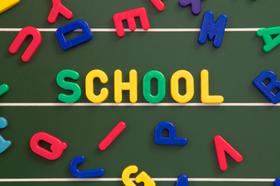Top Rankings
Souderton Area School District ranks among the top 20% of public school district in Pennsylvania for:
Category
Attribute
Overall Rank
Highest overall rank (Top 20%)
Math Proficiency
Highest math proficiency (Top 20%)
Reading/Language Arts Proficiency
Highest reading/language arts proficiency (Top 20%)
Community Size
Largest student body (number of students) (Top 1%)
For the 2025 school year, there are 2 public middle schools serving 1,370 students in Souderton Area School District. This district's average middle testing ranking is 9/10, which is in the top 20% of public middle schools in Pennsylvania.
Public Middle Schools in Souderton Area School District have an average math proficiency score of 44% (versus the Pennsylvania public middle school average of 29%), and reading proficiency score of 69% (versus the 52% statewide average).
Minority enrollment is 25% of the student body (majority Hispanic and Asian), which is less than the Pennsylvania public middle school average of 46% (majority Black and Hispanic).
Overview
This School District
This State (PA)
# Schools
9 Schools
923 Schools
# Students
5,973 Students
591,579 Students
# Teachers
458 Teachers
44,337 Teachers
Student : Teacher Ratio
13:1
13:1
Student By Grade
District Rank
Souderton Area School District, which is ranked within the top 20% of all 678 school districts in Pennsylvania (based off of combined math and reading proficiency testing data) for the 2022-2023 school year.
The school district's graduation rate of 91% has stayed relatively flat over five school years.
Overall District Rank
#77 out of 685 school districts
(Top 20%)
(Top 20%)
Math Test Scores (% Proficient)
53%
38%
Reading/Language Arts Test Scores (% Proficient)
71%
55%
Science Test Scores (% Proficient)
69%
57%
Graduation Rate
91%
87%
Students by Ethnicity:
Diversity Score
0.43
0.65
% American Indian
n/a
n/a
% Asian
7%
4%
% Hispanic
11%
17%
% Black
5%
20%
% White
75%
54%
% Hawaiian
n/a
n/a
% Two or more races
2%
5%
All Ethnic Groups
District Revenue and Spending
The revenue/student of $22,824 in this school district is less than the state median of $23,696. The school district revenue/student has stayed relatively flat over four school years.
The school district's spending/student of $21,692 is less than the state median of $23,119. The school district spending/student has stayed relatively flat over four school years.
Total Revenue
$136 MM
$39,541 MM
Spending
$130 MM
$38,578 MM
Revenue / Student
$22,824
$23,696
Spending / Student
$21,692
$23,119
Best Souderton Area School District Public Middle Schools (2025)
School
(Math and Reading Proficiency)
(Math and Reading Proficiency)
Location
Grades
Students
Rank: #11.
Indian Valley Middle School
(Math: 50% | Reading: 73%)
Rank:
Rank:
8/
Top 30%10
130 Maple Ave
Harleysville, PA 19438
(215) 256-8896
Harleysville, PA 19438
(215) 256-8896
Grades: 6-8
| 747 students
Rank: #22.
Indian Crest Middle School
(Math: 37% | Reading: 64%)
Rank:
Rank:
6/
Top 50%10
139 Harleysville Pike
Souderton, PA 18964
(215) 723-9193
Souderton, PA 18964
(215) 723-9193
Grades: 6-8
| 623 students
Recent Articles

The 15 Biggest Failures of the American Public Education System
The world is in a constant state of change and those who fail to adjust fall behind. Unfortunately, the American public education system has not kept up with the times and is currently facing a number of serious problems. Keep reading to learn about the biggest failures affecting the modern U.S. public education system as well as some of the trends that could spark change.

Florida Governor Calls for More Funding for State鈥檚 Public School System
Florida Governor Rick Scott has introduced a state budget for next year that pumps one billion more dollars into the public school system. We鈥檒l look at his reasons for the increase and the responses to the proposal.

Can Your Child鈥檚 School Meet the National Standards?
The article discusses the challenges public schools face in meeting national educational standards. It examines current performance trends, identifies key issues affecting student achievement, and explores potential solutions for improving academic outcomes across U.S. public schools.





